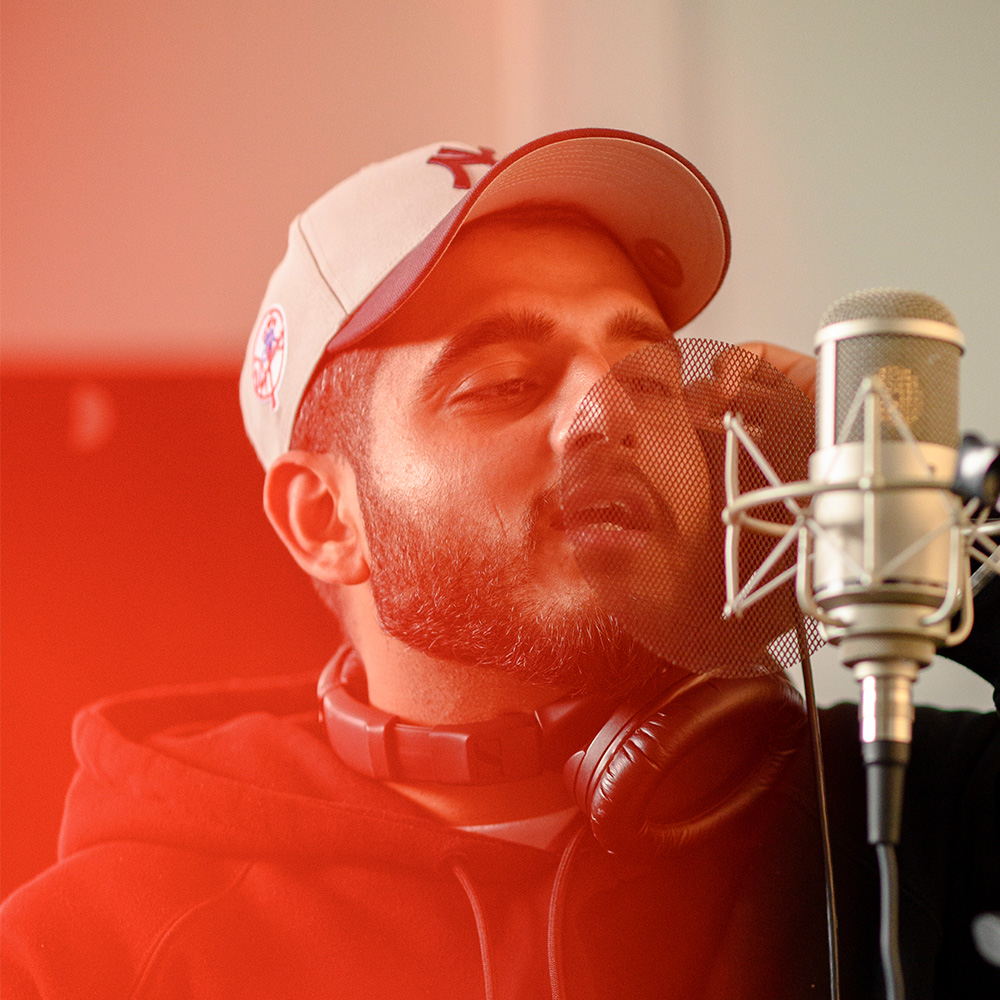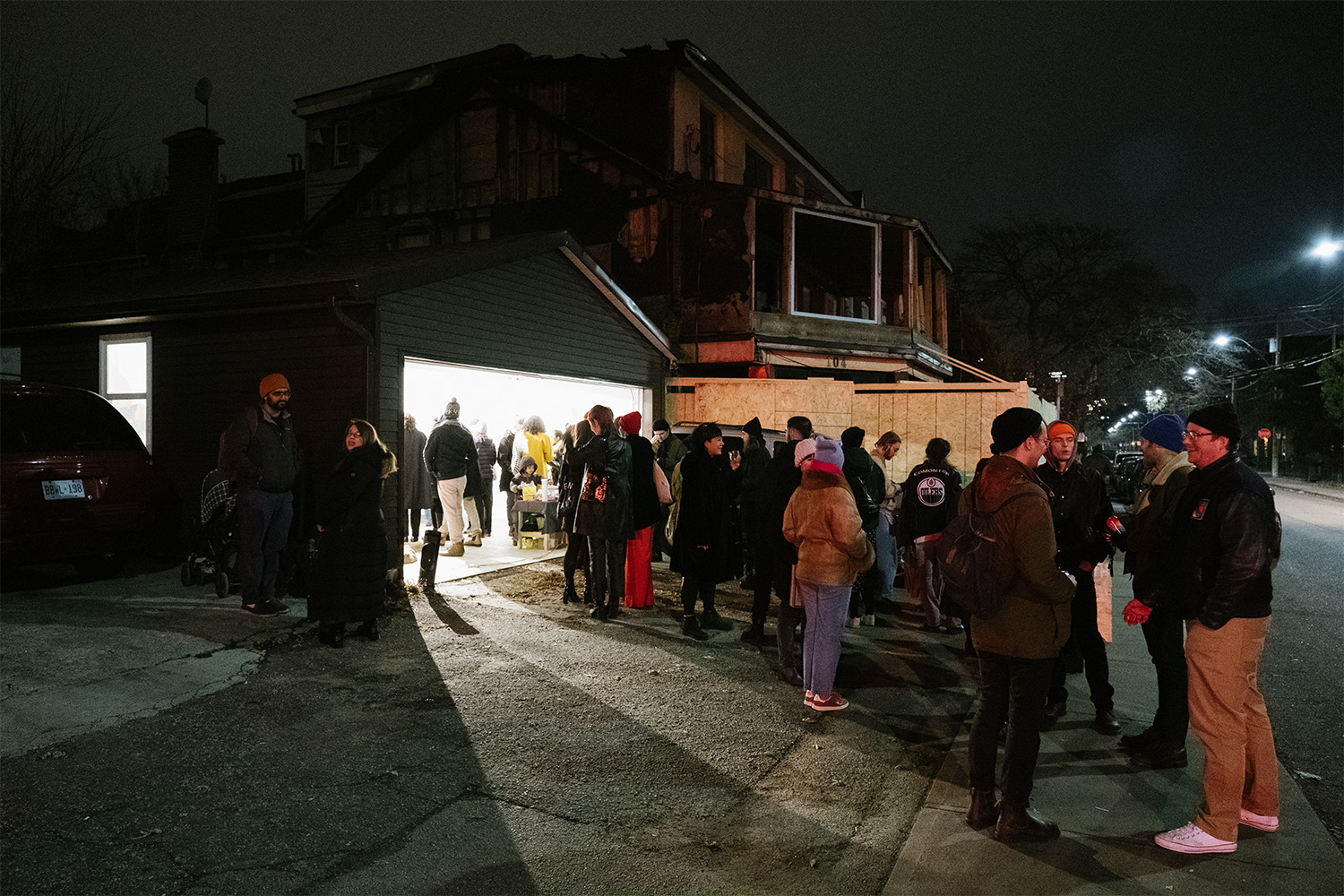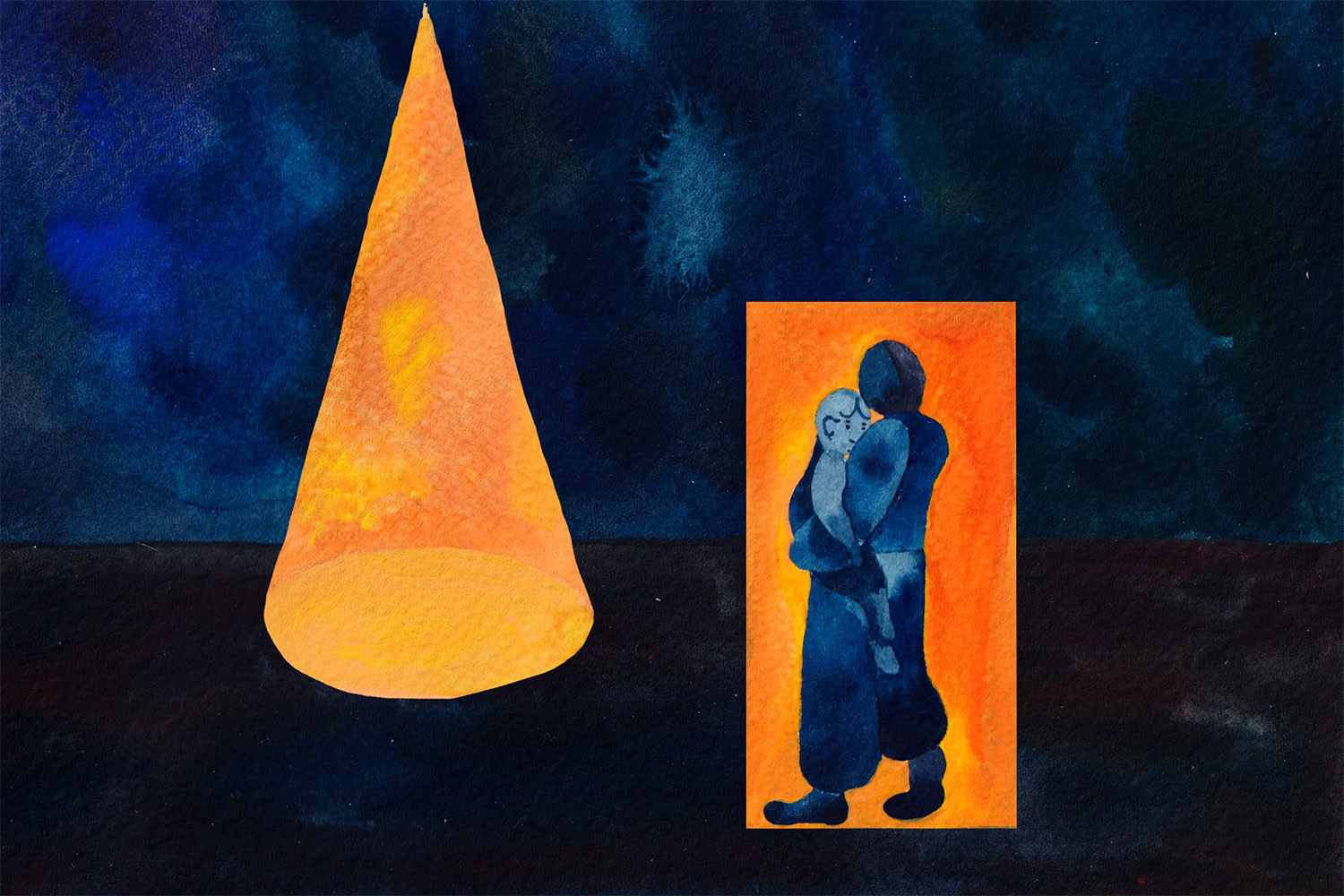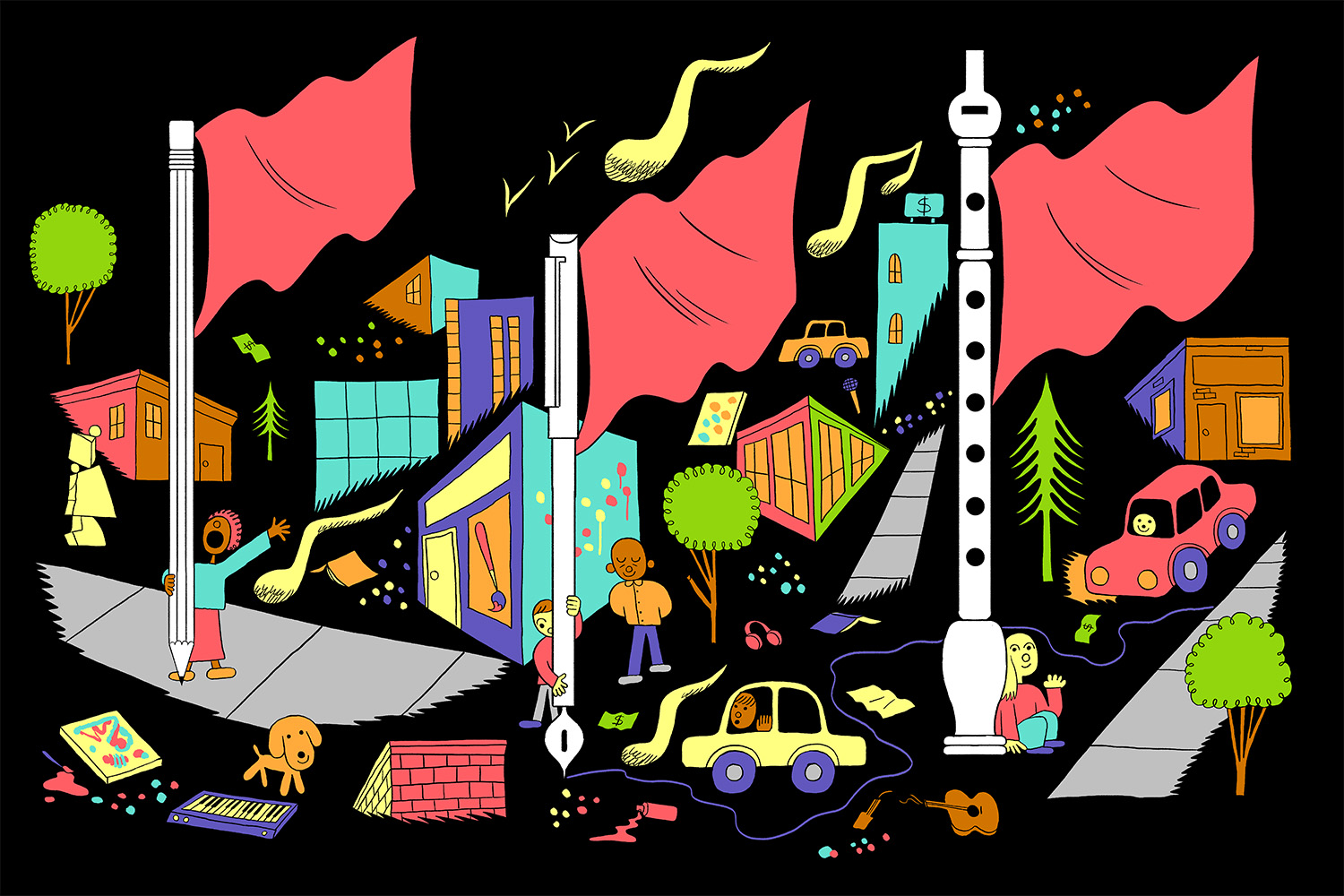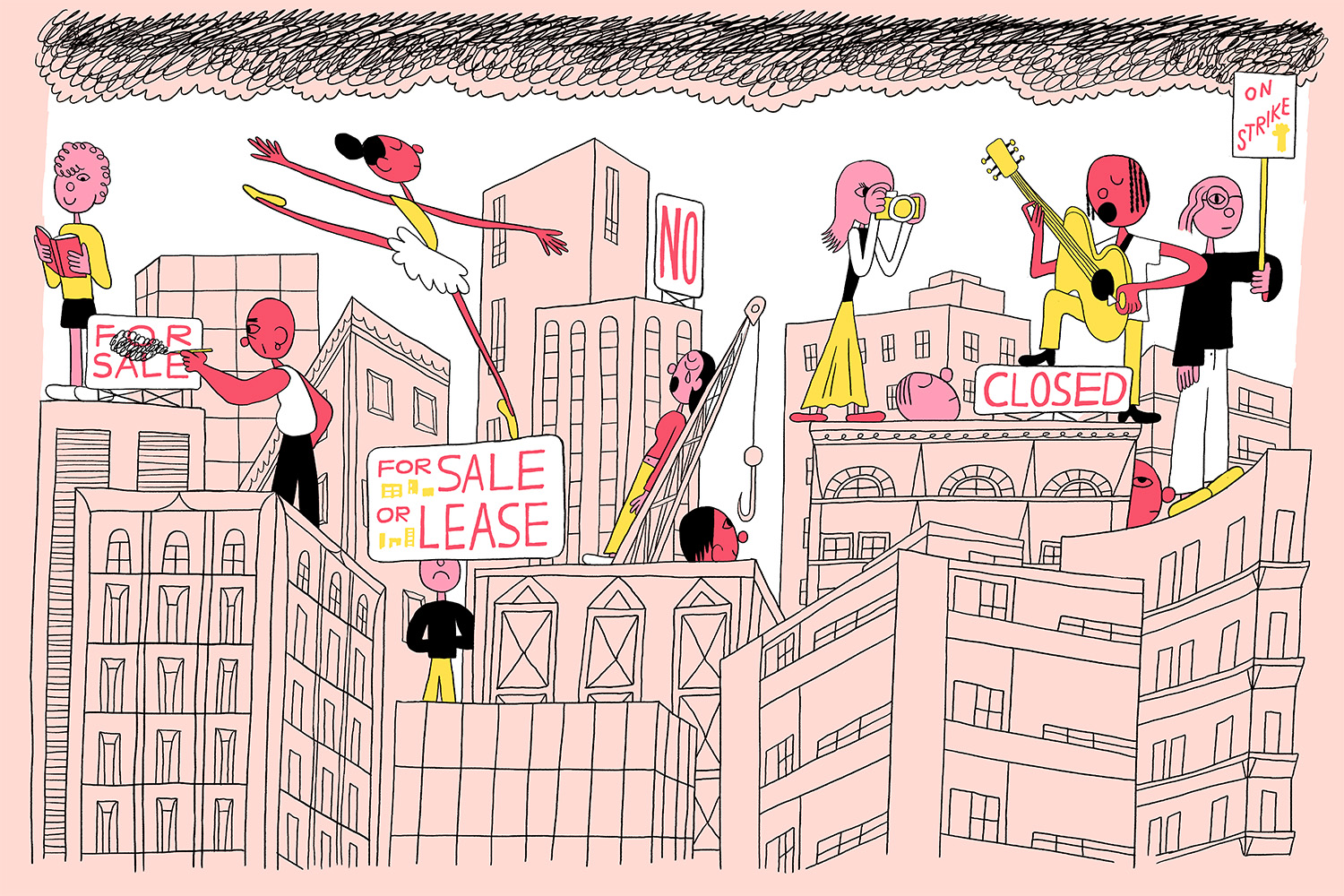The drive from Hamilton to New York City takes about eight hours, depending on the traffic. Harkirat Sangha has travelled this stretch of highway numerous times, transporting produce and other freight across the Canada-U.S. border in a semi-trailer truck. Always driving solo, Sangha would spend the journey listening to music and observing the changing landscape. Often, he’d compose lyrics and toy with ideas for songs of his own. Music was something Sangha had always enjoyed, and the long drives had his brain spinning out verses.
One day, he came up with a particularly catchy hook line.
“I kept singing ‘Mitran di life, ehi mitran di life,” he says, speaking in Hindi. Loosely translated, it means, “This is my friends’ life.”
At first he thought of writing a “commercial” song, a marketable tune like many other popular hits, in which artists boast about wearing Rolexes and gold chains, and driving fancy cars.
“But then I figured, that’s not my life at all,” says Sangha. He had come to Canada as an international student looking for a better future. However, driving a truck proved more lucrative than looking for jobs with his degree in computer systems technology.
“Mitran di life, ehi mitran di life” became the chorus for his viral hit, “Lifestyle,” a song about how Sangha, now 25, ended up in Canada and his circumstances here, half a world away from where he grew up in Punjab, India.
Shot in beautiful, golden-hour hues, the video for the song features Sangha riding an electric scooter around a neighbourhood in Surrey, B.C., grabbing a meal at a diner, shopping for groceries, and shooting hoops with friends. He sings about how his father paid nearly $40,000 for him to come to Canada as an international student, about how he’s worked several low-paying jobs, from construction to delivering pizza, before driving a truck, and how his music brings together the rhymes of American rapper Eminem with the poetry of celebrated Punjabi poet Paash.

Since its release last summer, “Lifestyle” has racked up more than 2 million views on Sangha’s YouTube channel; it’s not even his most popular song.
Now, he’s earning enough money from music-streaming platforms to pay his bills and save money for his musical ambitions. In doing so, he has joined the growing ranks of Punjabi musical artists seeking fame and fortune by singing about their experiences as international students with a Canadian dream.
In recent years, international students have been the focus of public debate around capping their numbers amid a shortage of affordable housing and social support. But Sangha and his peers find themselves in a different kind of spotlight. Following the lead of other international students-turned-pop stars who have launched from Canada, such as AP Dhillon, Shubh, and the late Sidhu Moose Wala, they’re developing a unique style and sound that is resonating with fans on both sides of the globe.
Growing up in Korewala Kala, a village in Moga district, Sangha had a good voice, and performed at school and other community functions. But he had no musical aspirations.
Korewala Kala is home to just over 1,200 people, most of whom rely on agriculture as their main source of income. The older generation still harvests crops of rice and wheat; the younger generation is looking for ways to get out of life on a farm.
Sangha was a good student with above-average grades. He set his sights on getting into the tech industry—partly influenced by the hackers he saw portrayed in Hollywood movies and because he had a knack for fixing computers and smartphones. On a whim one day, he and two of his best friends stepped into an agency recruiting young students to enrol in Canadian colleges.
“The three of us had been talking about how there’s not much of a future for us in Punjab,” he explains.
Since Sangha was interested in computers, the man at the agency suggested that he apply to Mohawk College in Hamilton to become a computer system technician. Sangha cleared the exam easily.
He landed in Canada in January 2016. And within weeks, at age 17, he was living in a basement apartment in Hamilton, attending school, and working in construction for $7 an hour, under-the-table.
The work was back-breaking and dangerous, done outdoors in -30 degree weather.
“It was a very isolating atmosphere,” he says. “There were days when I cried alone.”
His family could only afford one semester of Sangha’s tuition. He needed to work to pay the fees charged to international students, usually more than five times what domestic students pay. Over time, a string of jobs—delivering pizza, working at Subway, Uber Eats delivery—sometimes saw him working 70 hours a week. His studies suffered.
Yet in his limited free time, Sangha began to dabble in a newfound hobby. He started composing songs with his new friends Sukh Dhillon and Nishan Bandesha. He’d met Dhillon and Bandesha at Mohawk College, and quickly bonded over their shared experiences as young men navigating life on their own in a new country. Music became a way for the trio to express themselves.
Art + Money
Subscribe to our free newsletter to get our stories delivered directly to your inbox.
"*" indicates required fields

Wherever Punjabi migrants go, their arts and culture follow—though in the early wave of migration to Canada, dating back to the early 1900s and centred in B.C., Punjabi music and traditions were usually kept to family and social celebrations. The Punjabi population in Canada grew, following changes to immigration regulations in 1967, the adoption of Canada’s multiculturalism policy, and the 1984 anti-Sikh pogrom in India. And bhangra, the Punjabi folk music often performed at weddings and harvest celebrations, started to find new expression through artists such as Jazzy B from Surrey, B.C., and Toronto’s Punjabi By Nature in the ‘90s. At the time, however, these artists looked to the UK, which had a far more robust bhangra-pop music scene.
Over the past decade or so, a new hub of contemporary Punjabi music has emerged: the GTA, specifically Brampton, one of the fastest growing cities in the country. And artists like AP Dhillion and Moose Wala, who came to Vancouver and Brampton respectively as international students in 2016, have put Canadian-Punjabi music on the map.
Sara Grewal is an associate professor in the faculty of arts and science at Edmonton’s MacEwan University. Although her research centres on Urdu literature (particularly the form of ghazal), her teaching has primarily focused on hip hop, and how both art forms have been mobilised to resist social or colonial oppression.
According to Grewal, Brampton’s thriving community of music producers, directors, and social media stars can be traced to the network of artists that organically formed through collaborations in that city in the late aughts and included the likes of comedian-actor Jasmeet Raina (who also goes by Jus Reign), poet Rupi Kaur, and rapper Fateh Doe.
The Punjabi hip hop scene in Brampton covers a range of styles. The grassroots aspects of hip hop, inspired by the likes of pioneering New York DJ and rapper Afrika Bambaataa, is reflected in the music of artists like Noyz. Meanwhile, the influence of the late Los Angeles-area rapper Tupac Shakur can be detected in Moose Wala’s songs.
“We see all these different artists plugging into all these different ways that hip hop has evolved,” Grewal says.
The success of artists such as AP Dhillon and Moose Wala could be partially attributed to the ready audience of international students, who see their lives reflected in their songs—whether it’s the Canadian dream and its dark side, or the kinds “of repression and oppression that our youth are facing,” says Grewal.
“These young men are looking for role models,” she says. “They’re expected to be tough. The men of the house. They’re expected to make a lot of money, right?”
Moreover, the Punjabi lyrics of their songs are truly beautiful. One of AP Dhillon’s songs, for example, combines essentials of a form like ghazal, or the love poems of Heer-Ranhja, with mellowed out beats.
“It’s a vibe, that—taking my hat off as an academic, as a listener—it really hits the spot,” she says.
“I thought I might have to go back to India, with nothing to show for my time here. I was full of anxiety.”
Sangha and his friends Dhillon and Bandesha decided to approach a few Punjabi music producers they’d heard about in Brampton. It was 2017, and the three friends had no online presence of their own. They wanted help to get their songs on established Punjabi music YouTube channels.
It didn’t work out as they hoped. The producers gave the young men the runaround; they either kept the three waiting interminably to upload their songs or asked for money in exchange for getting on rotation. As Sangha and his friends discovered, the boom in Brampton’s Punjabi music scene also came with a rise in unscrupulous industry folks, trying to cash in on the ambition of young talent.
Not every producer tries to fleece artists, Sangha says, but you have to watch whom you work with.
By 2019, even though Sangha was starting to adapt to life in Canada, the hustle hit him hard. On the cusp of finishing his studies (it took him three years to complete the two-year program), he failed yet another exam. Rushing to go to work after visiting a relative, he was caught speeding and his newly acquired driver’s licence was suspended, which meant losing his pizza delivery job. He owed a group of friends close to $20,000, which he had borrowed to pay his tuition. He also broke up with his girlfriend.
“There was no escape,” he says, recalling he had only $10 left in his bank account. Meanwhile his parents were on his case, asking him why he was wasting his time and money. “I thought I might have to go back to India, with nothing to show for my time here. I was full of anxiety.”
Writing songs became a form of release. In spite of his earlier failed attempts with his friends, Sangha was determined to find a music producer who would help him develop further as an artist. In the meantime, in March 2022, he independently released a song on his YouTube channel called “Blend,” riffing on life in Canada, driving fancy cars, love, as well as a quick diversion into the farmers’ protest that had rocked India in 2020-2021. The video was shot with his friends on a $500 budget.
He followed weeks later with the release of “Jutti,” written by Bandesha.
Still, there was the practical matter of making a living. That same year, having received his permanent residency in Canada in 2021, Sangha started working for a local trucking company.
It gave him a decent income, with enough to pay off debts, and still set aside a sizable amount to invest in his music.
Sangha decided to give himself a year to produce 10 songs. If that didn’t get him anywhere, he’d quit, knowing he gave it his best shot.
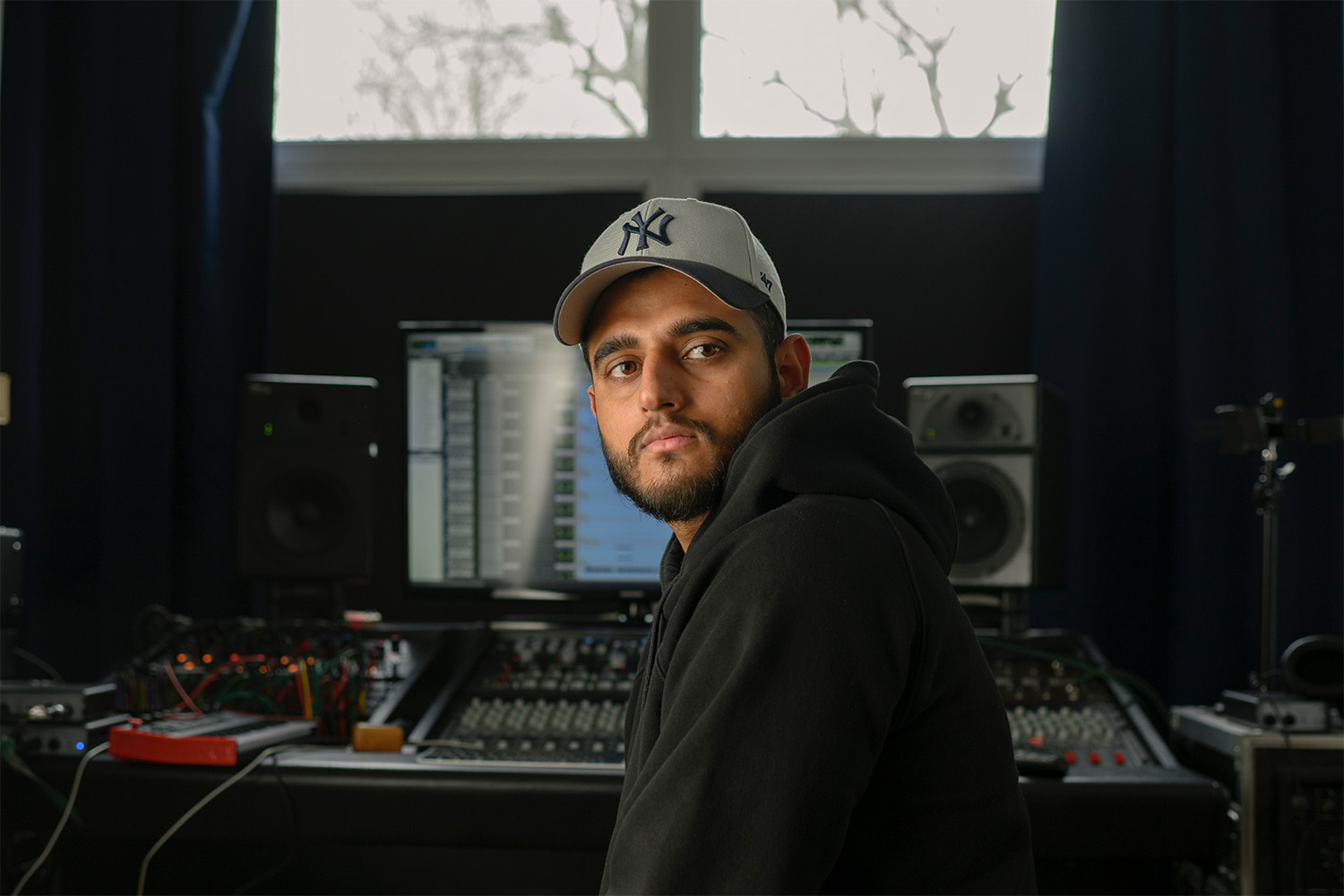
Scrolling through Instagram one day last summer, Sangha came across the profile of Starboy X, a sought-after producer based in the fast-growing city of Mohali in Punjab. Sangha liked the producer’s style and sent him a DM to gauge interest. Starboy X’s response, after listening to samples of Sangha’s work, was immediate: an artistic partnership was struck.
“It was just something new, something I’d never heard before,” says Starboy X, adding that his intuition was justified when he heard songs such as “Lifestyle” and the recently released “Exit.”
“Punjabi artists from Canada already have that exposure to artists like The Weeknd. Artists over here are listening and learning now. They didn’t even think about [these sound possibilities] before.”
With Sangha recording from Hamilton and Starboy X producing in Mohali, they released the first song they worked on together, “Patti Ton Patiala,” on Sangha’s YouTube channel in November 2023, followed by “Gucci Gabru.” Since their release, the songs have racked up more than 32 million and 12 million views respectively, and are also performing well on Spotify and other musical platforms.
Besides producing his music, Starboy X also told Sangha about apps that can publish songs on multiple platforms and track their analytics. Sangha’s revenue from streaming his music soon allowed him to quit truck driving. He has not looked back.
On a chilly February afternoon, during a recent visit to India to meet Starboy X in person and see his family, Sangha got out of his car and walked toward a coffee shop in Mohali. As he placed an order, he noticed the barista staring at him. Finally the barista mustered the courage to ask, “Are you Harkirat Sangha?”
When Sangha replied in the affirmative, the barista immediately started telling him how much he loves “Lifestyle.” Soon, a small crowd gathered, requesting selfies. Sangha ended up spending half an hour responding to fan requests, before insisting on paying for the coffee he came in for.
Even when Sangha wears a mask now, people recognize and approach him. “I don’t understand it,” he says, laughing, marvelling at his newfound celebrity status. His parents find his fame amusing, he says: “But they are also very proud. At first, they weren’t sure of what I was doing.”
But then, neither was he. The future, though, has become much clearer. “I am going to pursue music full time now,” he says. “This is my life now.”
Our Art + Money issue was made possible, in part, through the generous support of Toronto Arts Council. All stories were produced independently by The Local.

